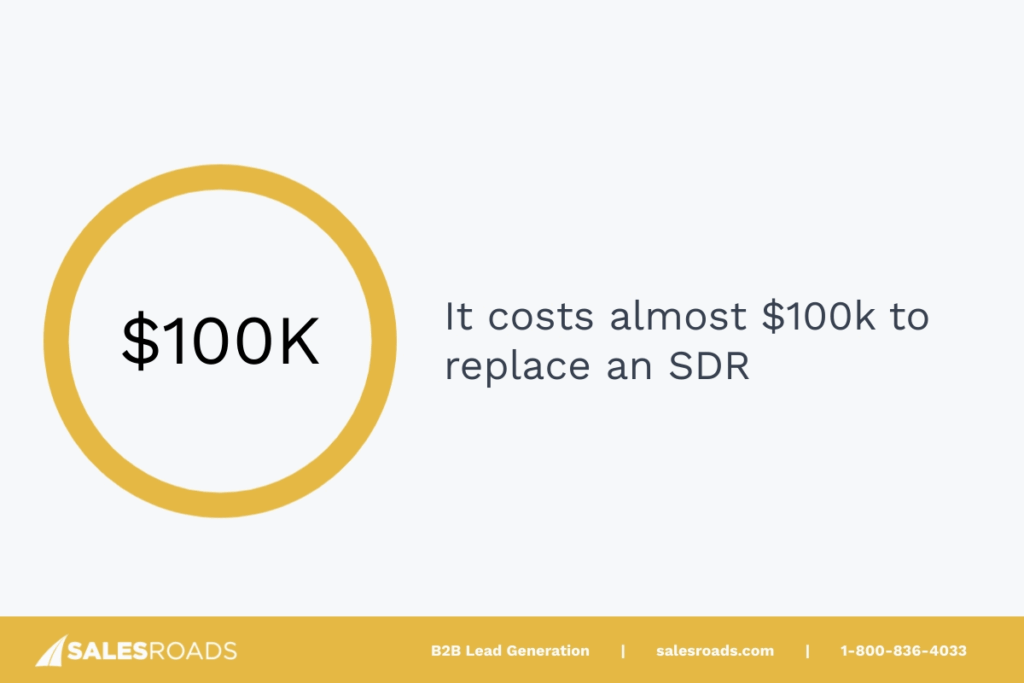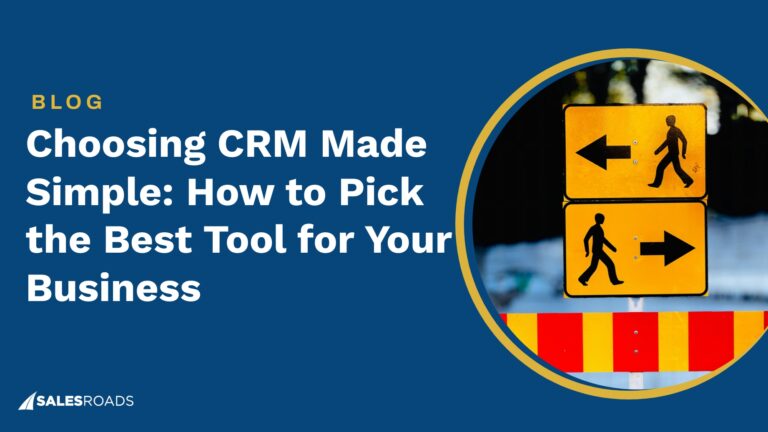Effective SDR onboarding sets the foundation for long-term performance, retention, and pipeline growth. When done right, it accelerates ramp time, reduces costly turnover, and ensures new reps hit quota faster.
Organizations with strong onboarding processes enjoy 82% greater employee retention and 70% better productivity compared to those with weak onboarding programs.
Yet the stakes are higher than many realize.
SDR turnover rates average between 30-35%, with 12% of companies experiencing annual turnover rates exceeding 55%. And the cost of replacing a single SDR can reach up to $100,000 when factoring in training, acquisition costs, and missed quotas.

In this article, we’ll walk through the top SDR onboarding mistakes and share practical tips to build an effective SDR onboarding process that sets your team up for success.
Mistake #1: Rushing Through the Onboarding Timeline
One of the biggest SDR onboarding mistakes is trying to move new hires through the process too quickly.
A rushed timeline may seem efficient, but it actually sets reps up for failure. Without enough time to absorb product knowledge, understand the buyer, and practice outreach, SDRs are more likely to make mistakes, lose confidence, and struggle to meet quotas.
Proper onboarding is a structured process that balances learning, practice, and real-world experience.
Why a Short Ramp-Up Period Sabotages Long-Term Performance
When onboarding is compressed, SDRs don’t have time to internalize key messaging, learn CRM workflows, or practice handling objections. This leads to early mistakes, inconsistent messaging, and longer-term underperformance.
The average SDR ramp time to hit full quota is 3 months, but only 4% of SDRs make it through their first 6 months at a company.

Even experienced reps benefit from a structured ramp; skipping steps increases the chance of forming bad habits that are hard to break.
Recommended Timelines Based on SDR Experience Levels
A clear timeline tailored to the experience level is crucial:
- Entry-Level SDRs (8–12 weeks): Weeks 1–2 for product, market, and buyer persona training; Weeks 3–4 for CRM and sales tool mastery plus call shadowing; Weeks 5–6 for supervised outreach and roleplaying; Weeks 7–8+ for independent outreach with ongoing coaching.
- Experienced SDRs (4–6 weeks): Week 1 for product and messaging refresh plus CRM overview; Week 2 for shadowing top performers and reviewing scripts; Weeks 3–4 for active outreach with manager check-ins; Weeks 5–6 for full pipeline ownership and performance reviews.
Following this structure gives SDRs the time to learn, practice, and gain confidence, ensuring a smoother ramp and faster contribution to pipeline growth.
Mistake #2: Skipping Foundational Company Knowledge
A common SDR onboarding mistake is assuming new hires can start prospecting without a deep understanding of your company. Without knowing your product, industry, and target audience, reps will struggle to speak confidently, handle objections, or position your solution effectively.
Skipping foundational knowledge leads to wasted outreach efforts and inconsistent messaging that can damage early relationships with prospects.
Reps Must Know Your Product, Industry, and Target Audience
Effective SDR onboarding starts with a solid knowledge base. Reps need to understand your product inside and out, know how it compares to competitors, and recognize the buyer personas they’ll engage.
And defining the ICP can be one of the most challenging processes for sales reps. Here’s a tip from David Kreiger:
Interactive training methods work best. Encouraging reps to explain the product, ICP, and industry back to the team ensures they’ve internalized the material and are ready for real conversations.
How to Make Internal Messaging and Brand Voice Clear
Consistency is critical. SDRs must use the same messaging across emails, calls, and social media. Make your brand tone and positioning explicit, and provide examples of objection handling.
Use roleplays, scripts, and cheat sheets to help reps practice delivering messages in your brand’s voice. Clear guidance here reduces errors, speeds ramp-up, and ensures prospects hear a unified, professional story from day one.
Mistake #3: Throwing SDRs Into Outreach Without a Script
Another key SDR onboarding mistake is sending reps into prospecting without structured guidance. Without a script or framework, new SDRs often fumble messaging, struggle with objections, and lose confidence.
The result is inconsistent outreach, missed opportunities, and longer ramp times. A well-designed script doesn’t replace creativity; it provides a foundation to build confidence and efficiency.
The Role of Cold Calling Scripts and Email Frameworks in Early Confidence
Call scripts and email templates give SDRs a clear starting point for conversations. They provide structure for introductions, discovery questions, and objection handling, reducing stress and boosting early performance.
The best scripts leave room for personalization, helping reps sound natural while maintaining consistency and alignment with your sales strategy.
How Sales Playbooks Speed Up SDR Ramp-Up
Sales playbooks complement scripts by providing a full roadmap for outreach. Include common scenarios, cadences, messaging tips, and escalation paths.
A playbook accelerates ramp time by giving SDRs a reference point for challenges they’ll encounter in real-world calls. It leads to faster proficiency, repeatable success, and a smoother transition from learning to active pipeline contribution.
Mistake #4: Neglecting CRM and Sales Tool Training
A major SDR onboarding mistake is assuming reps can learn CRM systems and sales tools on the fly. Without proper training, reps make data entry errors, miss follow-ups, and fail to leverage automation, slowing pipeline growth and creating avoidable inefficiencies.
An effective SDR onboarding process prioritizes hands-on training with all tools SDRs will use daily.
Teach Reps How to Use CRM Systems the Right Way Early On
New SDRs should understand CRM workflows from day one, how to log activities, track deals, and update contact records. Early mastery reduces mistakes, ensures accurate data, and helps managers monitor performance effectively.
Include exercises like logging mock calls, creating opportunity records, and updating lead statuses to reinforce learning.
Integrate Sales Enablement Tools Into Their Daily Process
Beyond the CRM, SDRs rely on prospecting tools, engagement trackers, and sales intelligence platforms. The best onboarding programs teach these tools through hands-on exercises rather than slides or lectures.
Have SDRs practice using a tool to research accounts, track email engagement, or pull insights for outreach. This builds fluency and integrates tools into daily workflow from the start.
Mistake #5: No Clear KPIs or Performance Milestones
Another critical SDR onboarding mistake is failing to set measurable goals from the start. Without clear KPIs, reps can’t gauge progress, stay motivated, or know when they’re on track.
An effective SDR onboarding process includes transparent performance metrics that provide structure and accountability.
SDRs Need Measurable Goals to Track Progress and Stay Accountable
Set early, achievable targets for calls, emails, meetings booked, and opportunities created. Clear SDR metrics give them a benchmark for success, helping them prioritize activities and stay engaged.
Early transparency ensures reps know what success looks like and reduces confusion about expectations.
Use Checklists, Scorecards, and Weekly Reviews to Stay on Track
Practical tools like activity scorecards, CRM dashboards, and weekly 1:1s help SDRs monitor progress and course-correct. Checklists guide reps through daily tasks, while scorecards highlight performance gaps.
Regular reviews provide coaching opportunities, reinforce accountability, and maintain consistent improvement.
Mistake #6: Ignoring Personalization and Buyer Context
A common SDR onboarding mistake is sending reps into outreach without teaching them how to research prospects or apply buyer context. Without personalization, messages feel generic, engagement drops, and opportunities are missed.
Effective SDR onboarding emphasizes intelligence-driven outreach.
Teach SDRs How to Research Prospects and Use Buyer Intelligence
Show reps how to leverage LinkedIn, intent data, and account insights to understand each prospect’s business, priorities, and pain points. This knowledge allows them to craft targeted messaging that resonates, increasing response rates and building credibility from the first touch.
Include Roleplaying to Practice Handling Specific Pain Points
Scenario-based exercises help SDRs apply buyer context in real conversations. Roleplaying objection handling, discussing industry challenges, or addressing specific buyer personas builds confidence and reinforces messaging.
Practicing these scenarios before live calls ensures reps are prepared for real-world interactions.
Mistake #7: Failing to Coach in Real-Time
One of the biggest SDR onboarding mistakes is treating training as a one-and-done activity. Without real-time coaching, reps continue making mistakes, miss learning opportunities, and take longer to ramp.
An effective SDR onboarding process emphasizes ongoing guidance and feedback to build skills quickly and consistently.
Use Call Recordings and Live Shadowing to Reinforce Sales Techniques
Immediate feedback is critical. Let SDRs listen to live or recorded calls to understand pacing, objection handling, and messaging.
Shadowing experienced reps allows new SDRs to see best practices in action and internalize techniques faster than theoretical training alone.
Avoid “Set It and Forget It” Training; Feedback Should Be Ongoing
Coaching shouldn’t stop after the first month. Schedule recurring 1:1s, call reviews, and group debriefs to reinforce lessons, address gaps, and celebrate progress. Continuous feedback keeps SDRs engaged, motivated, and aligned with your sales strategy.
Mistake #8: Underestimating the Manager’s Role in Onboarding
Another common SDR onboarding mistake is underestimating how critical managers are in ramping new reps. Managers aren’t just task overseers; they’re coaches, mentors, and the main point of accountability.
Their engagement directly impacts rep performance, confidence, and retention.
On the Sell Like A Leader Podcast, Rich DeGuzman and David Kreiger discussed integrating leadership training into daily activities, where team members are encouraged to adopt a leadership mindset and self-coach.
Listen to the full episode here:
Managers Need to Act as Sales Coaches, Not Just Task Overseers
Hands-on managers guide reps through real challenges, provide context for messaging, and model effective sales behaviors. Managers who invest time in coaching reduce errors, accelerate ramp-up, and improve pipeline results.
Build a 30-60-90 Day Plan With Dedicated Check-Ins
Structured plans help both managers and SDRs stay on track. Use a 30-60-90 day framework to set learning objectives, monitor KPIs, and schedule check-ins for coaching, roleplaying, and feedback.
This ensures alignment and accountability throughout onboarding.
30 days – Learning & observation
- Product training: Understand features, benefits, and key differentiators
- Industry overview: Competitors, trends, and market positioning
- Buyer personas: Pain points, priorities, and decision-making patterns
- LMS & CRM tools: Logging activities, managing contacts, and tracking deals
- Shadowing: Listen to live calls and observe experienced SDRs
- Goal: Build foundational knowledge and understand the SDR workflow
60 days – Guided practice & early execution
- Roleplaying: Practice objection handling, cold calls, and email outreach
- Supervised outreach: Begin sending emails and making calls with manager support
- KPI tracking: Monitor calls, meetings booked, and pipeline contribution
- Ongoing coaching: Weekly check-ins and call reviews
- Goal: Apply knowledge in real-world scenarios and gain confidence
90 days – Independent execution & optimization
- Full outreach ownership: Manage assigned accounts and campaigns
- Performance analysis: Review metrics like conversion rates and pipeline growth
- Continuous improvement: Identify gaps, refine messaging, and optimize workflows
- Manager check-ins: Less frequent but focused on strategy, career growth, and challenges
- Goal: SDR operates independently, hitting KPIs and contributing to pipeline
Mistake #9: Delaying SDR Exposure to Sales Conversations
A frequent SDR onboarding mistake is waiting too long to expose reps to live sales conversations. Without early exposure, SDRs miss context on how prospects behave, which objections are common, and what tone resonates.
An effective SDR onboarding process includes structured opportunities to listen, observe, and learn from real interactions.
Let SDRs Listen to Calls Early to Learn Real Prospect Behavior
Early call exposure teaches SDRs about objection patterns, buyer concerns, and conversational flow. Listening in on live calls or recorded sessions provides insights that can’t be replicated in roleplays alone.
Analyze Objection Handling Techniques With the Team
Debriefing as a group allows SDRs to discuss what worked, what didn’t, and how to improve messaging. Sharing lessons from real calls creates collective intelligence, speeds learning, and reinforces consistent best practices.
Bottom Line
SDR onboarding isn’t a checkbox; it’s an investment in the long-term success of your SDRs and your sales team. Avoid the common SDR onboarding mistakes by building a structured, hands-on, and measurable program.
Give reps time to learn, provide real-time coaching, set clear goals, and equip them with the tools and knowledge they need to engage prospects confidently.










